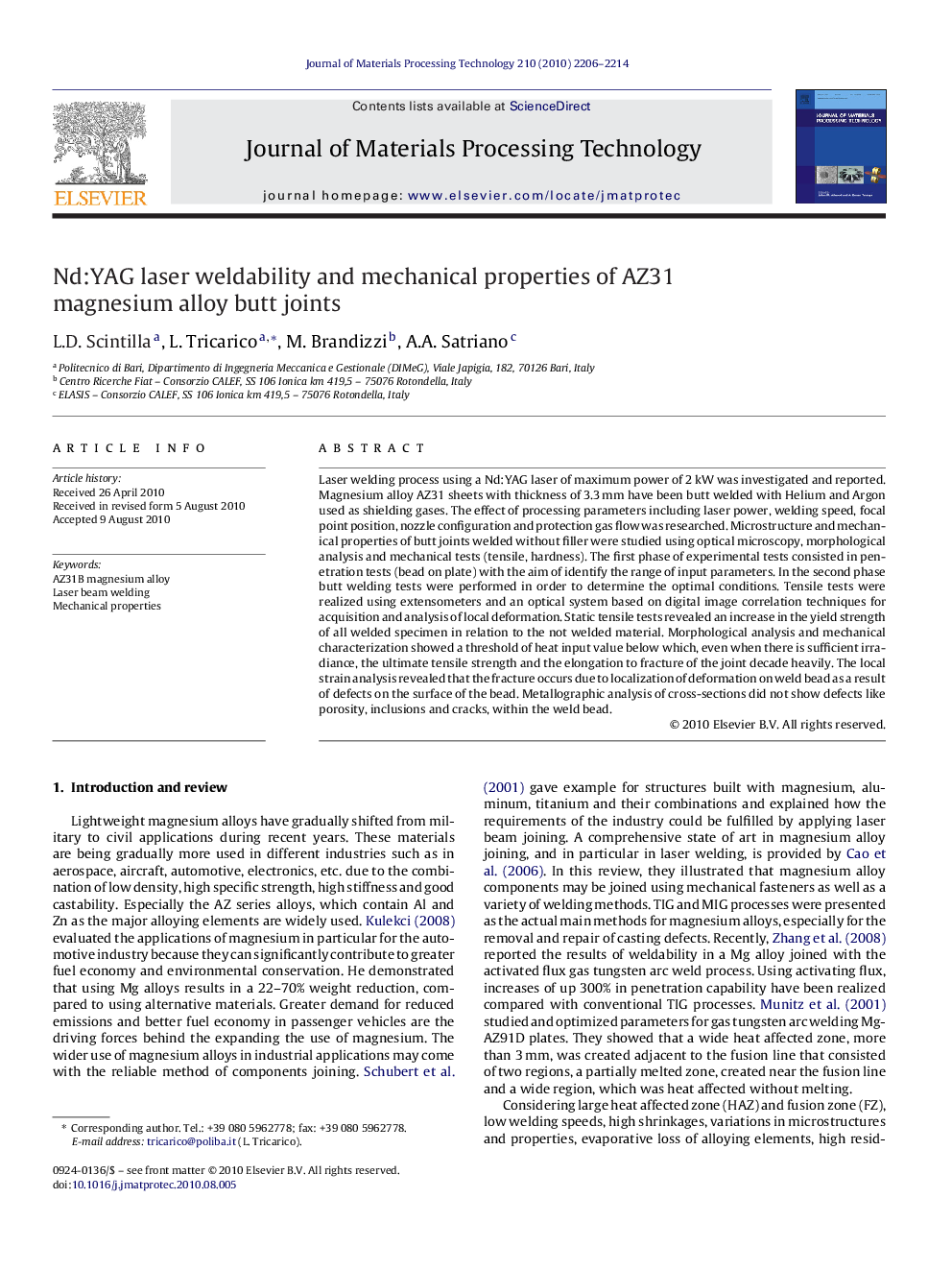| Article ID | Journal | Published Year | Pages | File Type |
|---|---|---|---|---|
| 796028 | Journal of Materials Processing Technology | 2010 | 9 Pages |
Laser welding process using a Nd:YAG laser of maximum power of 2 kW was investigated and reported. Magnesium alloy AZ31 sheets with thickness of 3.3 mm have been butt welded with Helium and Argon used as shielding gases. The effect of processing parameters including laser power, welding speed, focal point position, nozzle configuration and protection gas flow was researched. Microstructure and mechanical properties of butt joints welded without filler were studied using optical microscopy, morphological analysis and mechanical tests (tensile, hardness). The first phase of experimental tests consisted in penetration tests (bead on plate) with the aim of identify the range of input parameters. In the second phase butt welding tests were performed in order to determine the optimal conditions. Tensile tests were realized using extensometers and an optical system based on digital image correlation techniques for acquisition and analysis of local deformation. Static tensile tests revealed an increase in the yield strength of all welded specimen in relation to the not welded material. Morphological analysis and mechanical characterization showed a threshold of heat input value below which, even when there is sufficient irradiance, the ultimate tensile strength and the elongation to fracture of the joint decade heavily. The local strain analysis revealed that the fracture occurs due to localization of deformation on weld bead as a result of defects on the surface of the bead. Metallographic analysis of cross-sections did not show defects like porosity, inclusions and cracks, within the weld bead.
